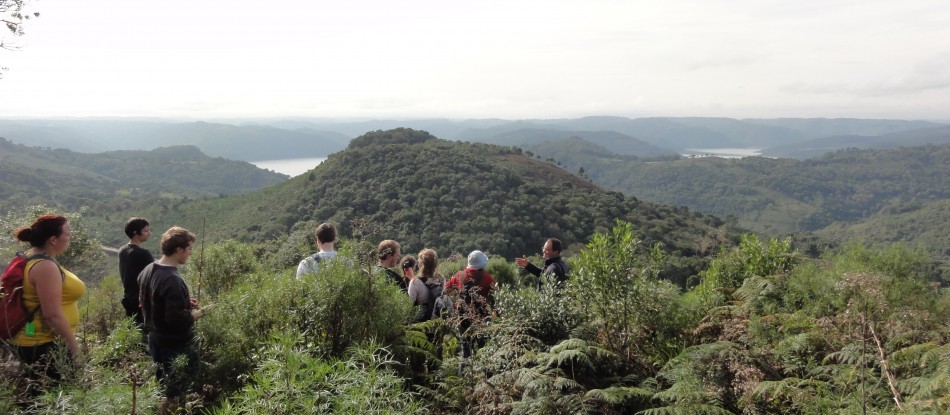
Highlands
ECOLOGY
Further inland, the Southern Brazilian Plateau is blanketed by a patchwork of pasture, grassland (Campos) and Araucaria forest. The remaining stands of Araucaria forest grow between 24-30ºS and 500 to 1800 m elevation. These ‘monkey puzzle’ coniferous trees have a highly distinctive shape, with a flat crown upon a straight trunk. They are living fossils, dating back to the Mesozoic Era, when they provided an important food source for sauropod dinosaurs. In more recent times, their seeds constituted an important part of the diet for the pre-Columbian Je culture. Trees associated with Araucaria include Ilex paraguarensis, Mimosa scabrella, and Podocarpus lambertii. At higher elevations, forest gives way to Campos vegetation – an open herbaceous grassland dominated by Poaceae, Cyperaceae, and Asteraceae.
ARCHAEOLOGY
The most distinct repertoire of Je culture is found in the Highland zone. Settlement sites are represented by pit-house structures of varying size and distribution, distinct ritual zones are found in the form of mound and enclosure complexes (MECS), in addition to which there are examples of rock art and surface material spreads. The distribution and organisation of these different components is far from uniform, and the project will investigate elements of regional diversity in the archaeological record.
Take a look in the intensive research regions:
Campo Belo do Sul
